Exploring the vibrant tapestry of Vietnam’s culture offers a journey rich with history, tradition, and community spirit. As a seasoned traveler and cultural enthusiast, I’ve found that immersing yourself in the country’s festivals is arguably the most profound way to connect with its soul. Festivals In Vietnam are not merely events; they are living, breathing narratives of the nation’s past, present, and aspirations for the future. They are moments where history comes alive, traditions are celebrated with fervent energy, and the genuine warmth of the Vietnamese people is on full display.
From the bustling energy of the Lunar New Year to the solemn beauty of ancestral commemorations and the joyful exuberance of harvest celebrations, each festival offers a unique window into the diverse identities that make up Vietnam. These events are often deeply rooted in history, folklore, and agrarian cycles, reflecting the profound connection the Vietnamese people have with their land and heritage. They are a testament to resilience, cultural pride, and the enduring power of community bonds. Participating in these celebrations allows you to move beyond being a passive observer and truly live alongside the local culture, creating travel memories that resonate long after you’ve returned home.
Vietnam’s Most Enchanting Festivals Throughout the Year
Vietnam’s calendar is dotted with numerous festivals and public holidays, each offering a distinct flavor of the nation’s cultural landscape. Timing your visit to coincide with one of these major events can transform a regular trip into an unforgettable adventure. Let’s delve into some of the most significant and captivating Festivals In Vietnam that promise a deeper understanding of this fascinating country.
Tết Nguyên Đán: The Lunar New Year
Easily the most important and widely celebrated event, Tết (Lunar New Year) is the cornerstone of Festivals In Vietnam. Falling typically in late January or early February, Tết is a time for family reunions, paying respects to ancestors, and hoping for good fortune in the year ahead. Preparations begin weeks in advance, with families cleaning and decorating their homes to welcome prosperity and chase away bad luck.
Streets and markets overflow with colorful flowers, particularly peach blossoms in the North and Ochna flowers in the South, symbolizing prosperity. Traditional foods like Bánh Chưng (savory sticky rice cake with pork and mung beans) and Bánh Tét (a cylindrical version, popular in the South) are meticulously prepared. The air is filled with anticipation, the scent of incense, and the sound of firecrackers on New Year’s Eve, which marks the most sacred moment. While many Vietnamese travel home, cities like Hanoi and Ho Chi Minh City offer vibrant public celebrations, fireworks displays, and a palpable sense of collective joy. It’s a time of optimism, forgiveness, and looking forward.
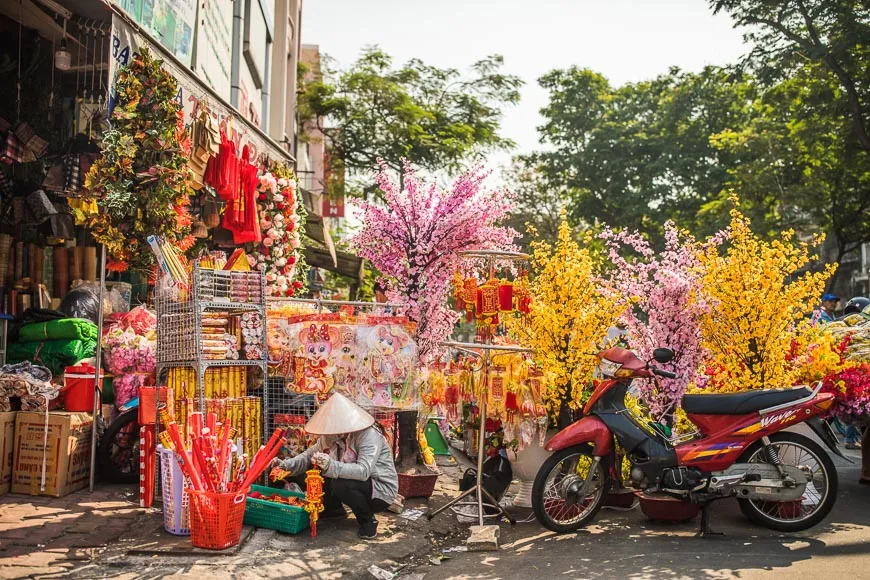 tet festival vietnam what to do
tet festival vietnam what to do
For travelers, experiencing Tết offers a unique glimpse into the heart of Vietnamese family life and traditions. While some shops and services may be closed for a few days, the opportunity to witness the nationwide transformation and join in the festive atmosphere is unparalleled. Sharing a meal with a local family, if invited, is a truly special experience. Remember to offer small gifts or ‘lucky money’ in red envelopes to children.
Lim Festival: A Celebration of Folk Singing
Held in Bắc Ninh Province, about an hour east of Hanoi, the Lim Festival is a joyful post-Tết celebration centered around the unique Quan Họ folk singing tradition. This UNESCO-recognized intangible cultural heritage is performed by male and female singers dressed in traditional costumes, often exchanging melodic verses from aboard dragon boats or on hillsides.
Fun Things to Do in Kissimmee Florida
Where To Go In Waikiki – Your Ultimate Guide to Hawaii’s Iconic Beachfront
The Best Things to Do in Naples – Your Ultimate Italian Experience
The Quan Họ songs are characterized by their intricate call-and-response structure and beautiful melodies, often telling stories of love, friendship, and village life. The festival is a vibrant showcase of local culture, featuring traditional games, craft exhibitions, and plenty of delicious local food. It’s a delightful way to experience the rich cultural heritage of the Red River Delta region.
Huế Festival and Huế Craft Village Festival
As the former imperial capital, Huế is steeped in history and culture, making its annual festivals significant events in Vietnam’s cultural calendar. The Huế Festival and Huế Craft Village Festival alternate each year, typically held in April or May.
The Huế Festival is a large-scale event that brings the city’s imperial past to life. It features spectacular performances within the Citadel walls, including reenactments of royal ceremonies, traditional music and dance, and art exhibitions. The city comes alive with street parades, cultural shows, and international artistic performances. It’s a grand celebration that highlights Huế’s status as a center of Vietnamese culture and history.
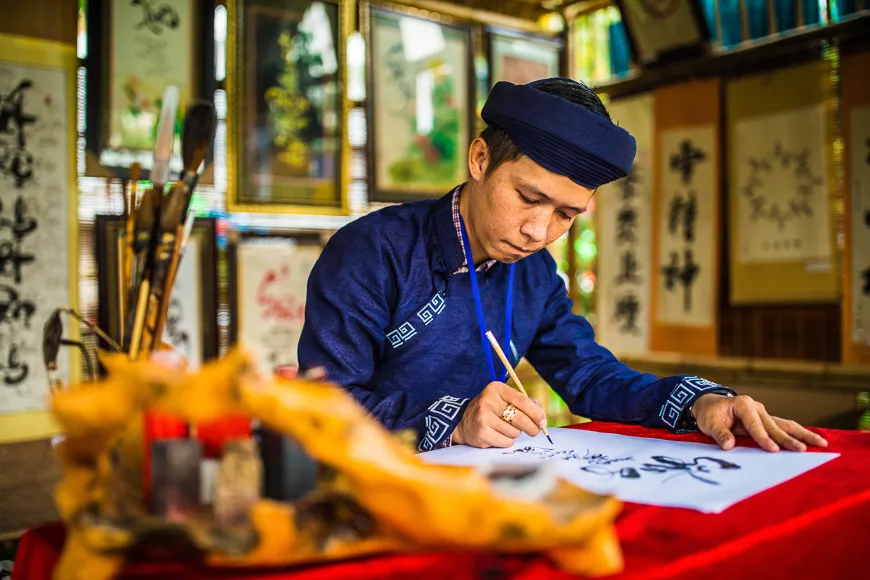 hue festival review
hue festival review
In alternate years, the Huế Craft Village Festival focuses on the region’s rich tradition of handicraft production. This festival showcases the skills of artisans from surrounding villages, featuring exhibitions of intricate embroidery, conical hats (nón lá), ceramics, lacquerware, and more. It provides insight into the craftsmanship that has been passed down through generations and offers an opportunity to purchase authentic local products. Both festivals offer deep dives into the artistic and historical layers of Huế.
Hùng Kings Temple Festival: Commemorating the Ancestors of the Nation
The Hùng Kings are legendary figures considered the first kings of Vietnam, founders of the Văn Lang nation. The Hùng Kings Temple Festival, held from the 8th to the 11th day of the third lunar month (usually April or May), commemorates their legacy and the nation’s origin story. The main site of the festival is the Hùng Temple complex in Việt Trì City, Phú Thọ Province.
Hundreds of thousands of pilgrims from all over Vietnam flock to the temple complex, climbing the mountain to pay respects to the ancestral kings. The atmosphere is one of deep reverence and national unity. On the eve of the main festival day, a solemn ceremony sees hundreds of lanterns released into the sky. The main day features processions, traditional rituals, and cultural performances. It’s a powerful demonstration of Vietnamese people’s connection to their history and collective identity.
Xến Xó Phốn Festival: A Prayer for Rain
Deep in the picturesque Mai Châu valley, the White Thai ethnic minority celebrates the Xến Xó Phốn Festival, usually in the fourth lunar month (April/May). This festival is essentially a ritual calling for rain, crucial for the success of the year’s harvest.
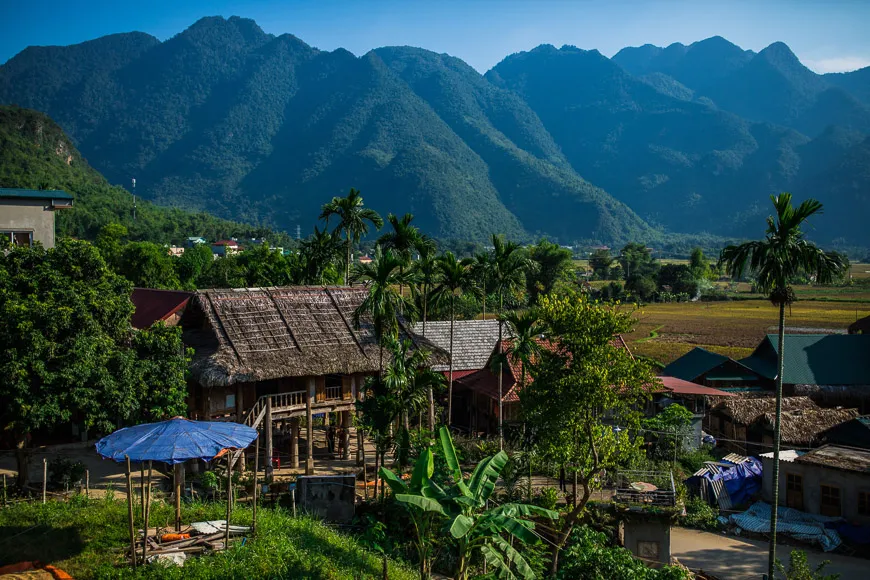 Xen Xo Phon Festival Vietnam
Xen Xo Phon Festival Vietnam
The White Thai people perform traditional songs, dances, and make offerings throughout the village to appeal to the spirits for abundant rainfall. Local beliefs hold that the more lively and heartfelt the festival, the more generous the rains will be, ensuring a prosperous harvest. It’s a fascinating example of how deeply intertwined cultural traditions and agricultural life are in Vietnam’s ethnic minority communities. Witnessing this festival offers a glimpse into the spiritual beliefs and unique customs of the White Thai people in their stunning natural setting.
Ghost Festival or Wandering Souls Day (Tết Trung Nguyên)
Falling on the 15th day of the 7th lunar month (late August or early September), Tết Trung Nguyên, also known as the Ghost Festival or Wandering Souls Day, is a time when the boundary between the living and the spirit world is believed to be thinnest. It is a significant occasion for ancestor worship and compassion towards those who have no one to worship them.
Families prepare elaborate altars with offerings of food, flowers, and incense to honor their ancestors. A particularly poignant ritual involves burning ‘votive paper’ – paper money, clothes, and even models of modern conveniences – for spirits to use in the afterlife. Offerings are also made to ‘wandering souls’ or ‘hungry ghosts’ who died without descendants or were neglected, to alleviate their suffering.
While observed nationwide, the atmosphere in places like Huế, with its numerous pagodas and historical depth, can be particularly atmospheric. It’s a time for reflection, piety, and acts of charity, showcasing the deep-seated belief in filial piety and the interconnectedness of generations in Vietnamese culture. Witnessing the rituals offers a solemn yet deeply meaningful insight.
National Independence Day
September 2nd is a pivotal date in Vietnam’s modern history, commemorating President Ho Chi Minh’s declaration of independence from France in 1945 at Ba Dinh Square in Hanoi. This day is celebrated nationwide with patriotic fervor.
Government buildings and many homes are adorned with the national flag. Major cities like Hanoi and Ho Chi Minh City host parades, public gatherings, and impressive fireworks displays in the evening. The atmosphere is festive and proud, with people taking to the streets to celebrate their nation’s sovereignty. Travelers are welcome to join in the public celebrations and witness the displays of national pride.
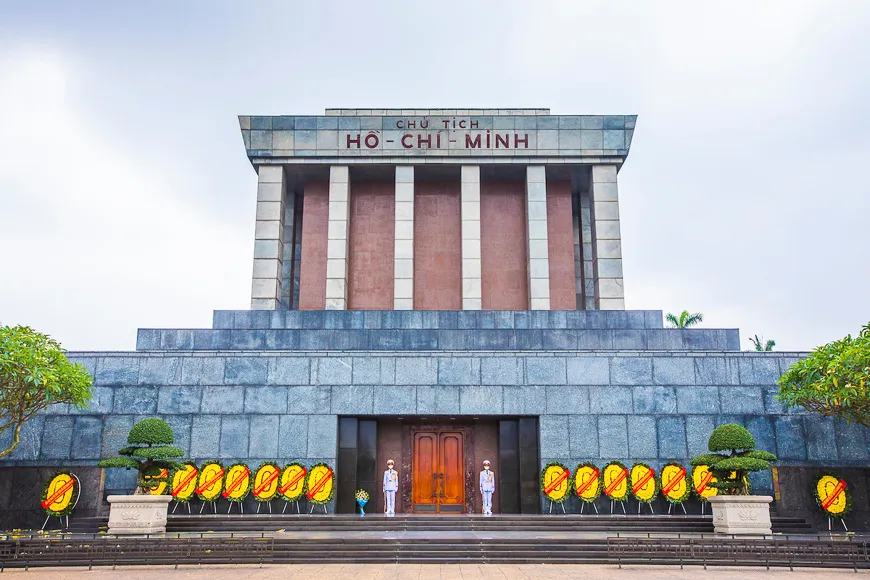 independence day vietnam
independence day vietnam
Experiencing Independence Day offers insight into Vietnam’s recent history and the unity of its people. It’s a modern public holiday, different in nature from the traditional lunar calendar festivals, yet equally significant in shaping the nation’s identity.
Mid-Autumn Festival (Tết Trung Thu)
Falling on the 15th day of the 8th lunar month (September or October), the Mid-Autumn Festival is a joyous occasion often referred to as the ‘Children’s Festival’. It marks the harvest moon and is a time for families to gather, share mooncakes (Bánh Trung Thu), and celebrate with children.
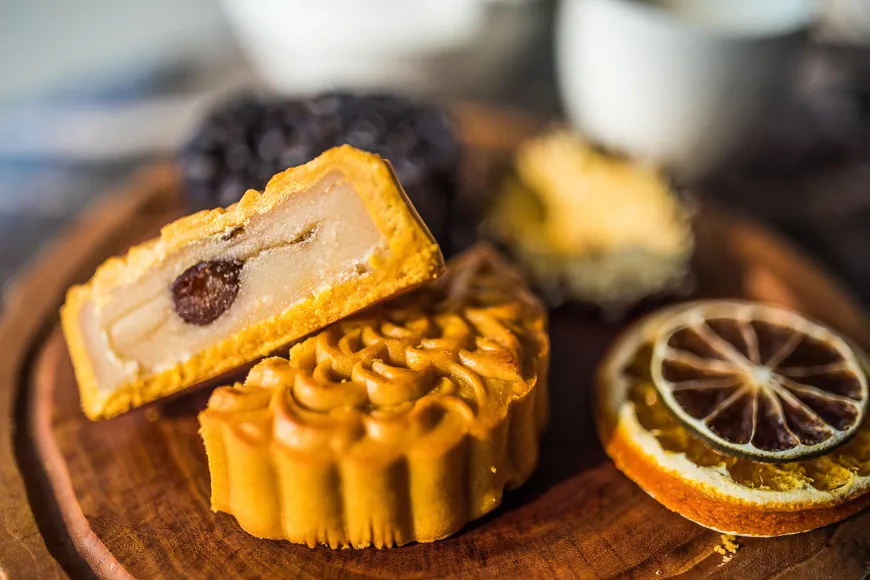 mid-autumn festival in vietnam
mid-autumn festival in vietnam
Streets are filled with colorful paper lanterns, masks, and toys. Children participate in lantern parades, often holding star-shaped lanterns. Lion dances are a popular spectacle, with energetic troupes performing in the streets. Families gather outdoors to admire the full moon, share mooncakes and tea, and watch the festivities. Hoi An’s Ancient Town is particularly magical during this time, with lanterns illuminating the streets and floating on the Thu Bon River, creating a breathtaking scene. It’s a festival filled with light, sweetness, and the joyful energy of children.
Oóc Om Bóc Festival: Thanksgiving to the Moon God
Celebrated by the Khmer ethnic minority in the Mekong Delta, particularly in Sóc Trăng Province, the Oóc Om Bóc Festival (usually in late November or early December, on the 14th day of the 10th lunar month) is a unique celebration giving thanks to the Moon God for a successful harvest.
The highlight of Oóc Om Bóc is the thrilling ‘Ngo’ boat race on the river. These long, narrow boats are traditionally carved from a single tree trunk and feature intricate decorations. Teams of rowers compete fiercely, cheered on by thousands of spectators. The festival also includes other activities like traditional music and dance performances, offerings to the moon, and feasting. It’s a spectacular display of the rich cultural heritage and vibrant community life of the Khmer people in Vietnam, offering a different perspective on the nation’s diversity.
Gregorian New Year’s Eve
While Tết is the traditional and culturally paramount New Year, Vietnam also embraces the global celebration of Gregorian New Year’s Eve on December 31st. This offers a chance for double the festive fun!
Major cities like Hanoi, Ho Chi Minh City, and Đà Nẵng host public countdown events, live concerts, and dazzling fireworks displays over prominent landmarks. Streets come alive with people celebrating, enjoying the festive atmosphere, and ringing in the new calendar year with friends and family. It’s a more modern, cosmopolitan celebration compared to Tết, reflecting Vietnam’s integration into the wider world while maintaining its unique cultural identity. Joining the crowds for the midnight countdown is an exhilarating way to welcome the New Year in Vietnam.
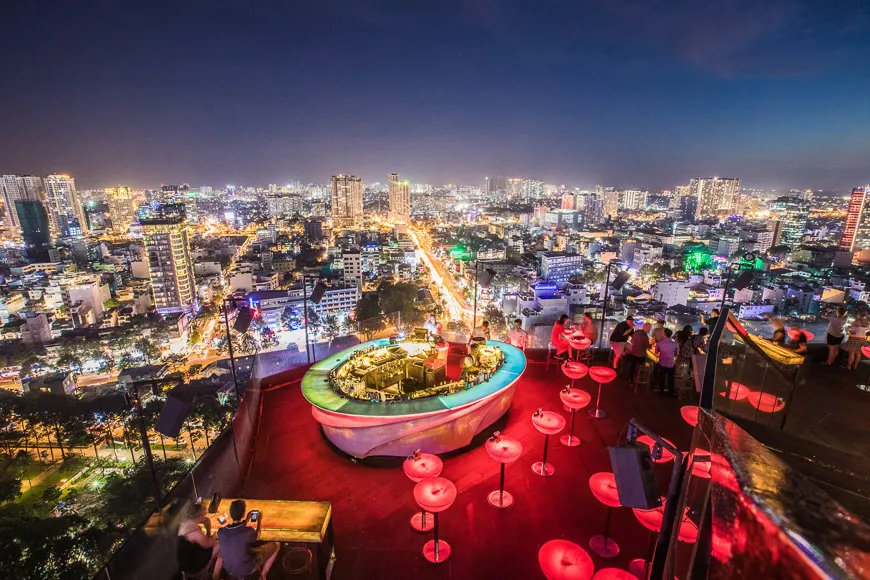 new years eve in vietnam
new years eve in vietnam
Tips for Experiencing Festivals In Vietnam
Attending a festival in Vietnam is an incredible experience, but a little preparation can enhance your enjoyment. Here are a few tips based on my travels:
- Plan Ahead: Festivals are peak travel times. Book flights and accommodation well in advance, especially for major events like Tết.
- Be Patient: Crowds are part of the experience. Be prepared for packed streets, public transport delays, and longer waits.
- Respect Customs: Learn about the specific traditions and etiquette of the festival you’re attending. Dress modestly when visiting temples or participating in religious ceremonies. Ask permission before taking photos of people.
- Stay Hydrated and Safe: Festivals often involve being outdoors in potentially hot weather. Drink plenty of water and be mindful of your belongings in crowded areas.
- Try Local Food: Festivals are a fantastic opportunity to sample special dishes only prepared for the occasion. Don’t be afraid to try street food – it’s often the most authentic and delicious!
- Embrace the Chaos: While sometimes overwhelming, the energy and passion of Vietnamese festivals are contagious. Let go of expectations and simply enjoy being swept up in the celebrations.
Frequently Asked Questions About Festivals In Vietnam
Here are answers to some common questions travelers have about attending festivals in Vietnam:
Q: What is the most important festival in Vietnam?
A: The most important and widely celebrated festival is Tết Nguyên Đán, the Lunar New Year. It’s a time for family reunion and holds deep cultural significance.
Q: Are businesses closed during Vietnamese festivals?
A: During Tết, many businesses, including shops, restaurants, and some tourist attractions, may close for a few days as people return home to celebrate with family. For other festivals, closures are less common, though local businesses directly involved in the event may be affected. It’s wise to check in advance.
Q: Is it okay for tourists to participate in festivals?
A: Absolutely! Vietnamese people are generally very welcoming and happy to share their culture. While some rituals might be family-specific, public parades, performances, markets, and general street celebrations are open to everyone. Being respectful and showing genuine interest is key.
Q: How do I find out the exact dates for lunar calendar festivals?
A: Festivals based on the lunar calendar change dates each year relative to the Gregorian calendar. You can find online lunar-to-Gregorian calendar converters or check reliable travel websites and the official Vietnam tourism board website for the specific dates for the current or upcoming year.
Q: What traditional food should I try during Tết?
A: Bánh Chưng and Bánh Tét are essential Tết foods. Other common dishes include boiled chicken, Vietnamese sausage (Giò Lụa), spring rolls, and candied fruits (Mứt).
Conclusion: A World of Celebration Awaits
To experience Festivals In Vietnam is to witness the heart and soul of the nation. These events are vibrant expressions of history, community, and cultural identity. From the sacred rituals of Tết and the Hùng Kings Temple Festival to the joyful street celebrations of Mid-Autumn and Independence Day, each festival offers a unique narrative and an opportunity for genuine connection.
As a content creator passionate about the intersection of travel, culture, and human experience, I wholeheartedly recommend timing your trip to coincide with one of these incredible events. You won’t just visit Vietnam; you’ll live it, breathe it, and celebrate with its people, gaining insights and creating memories far richer than standard sightseeing can offer. The world of Vietnamese festivals is vast and captivating – are you ready to dive in?
